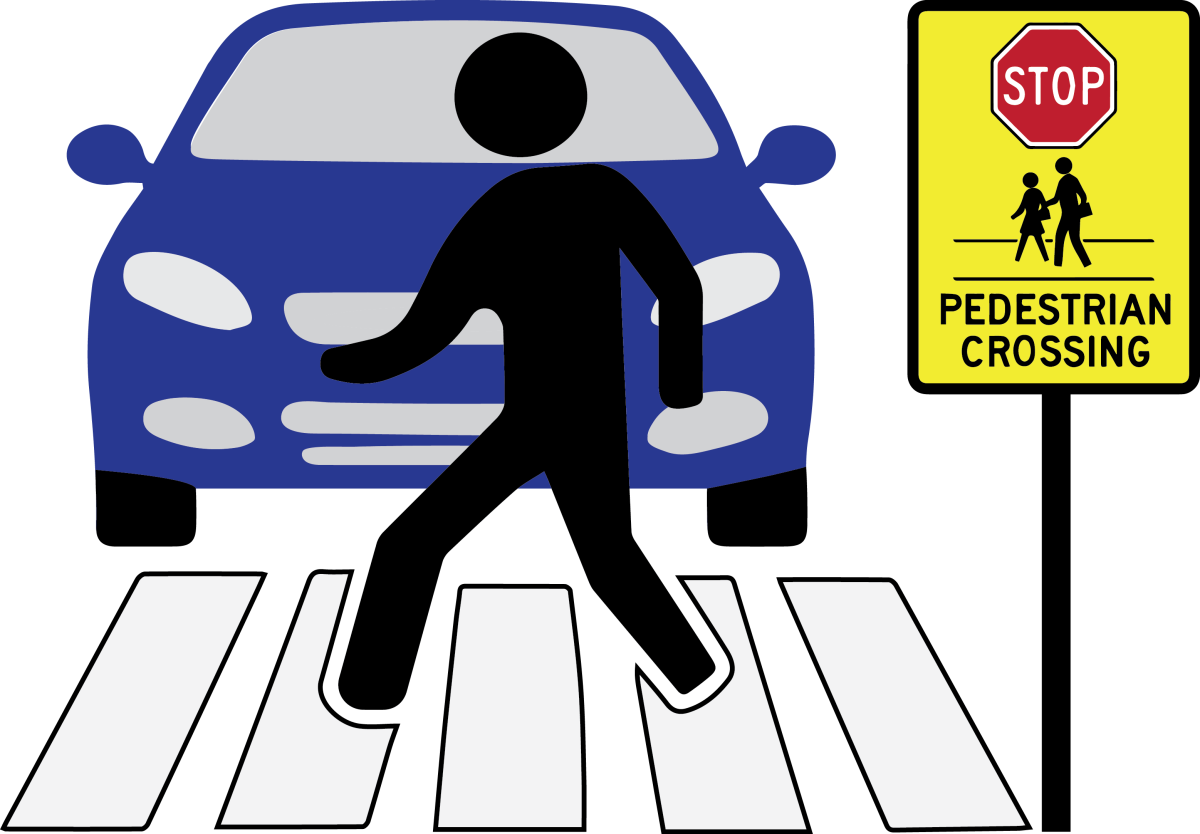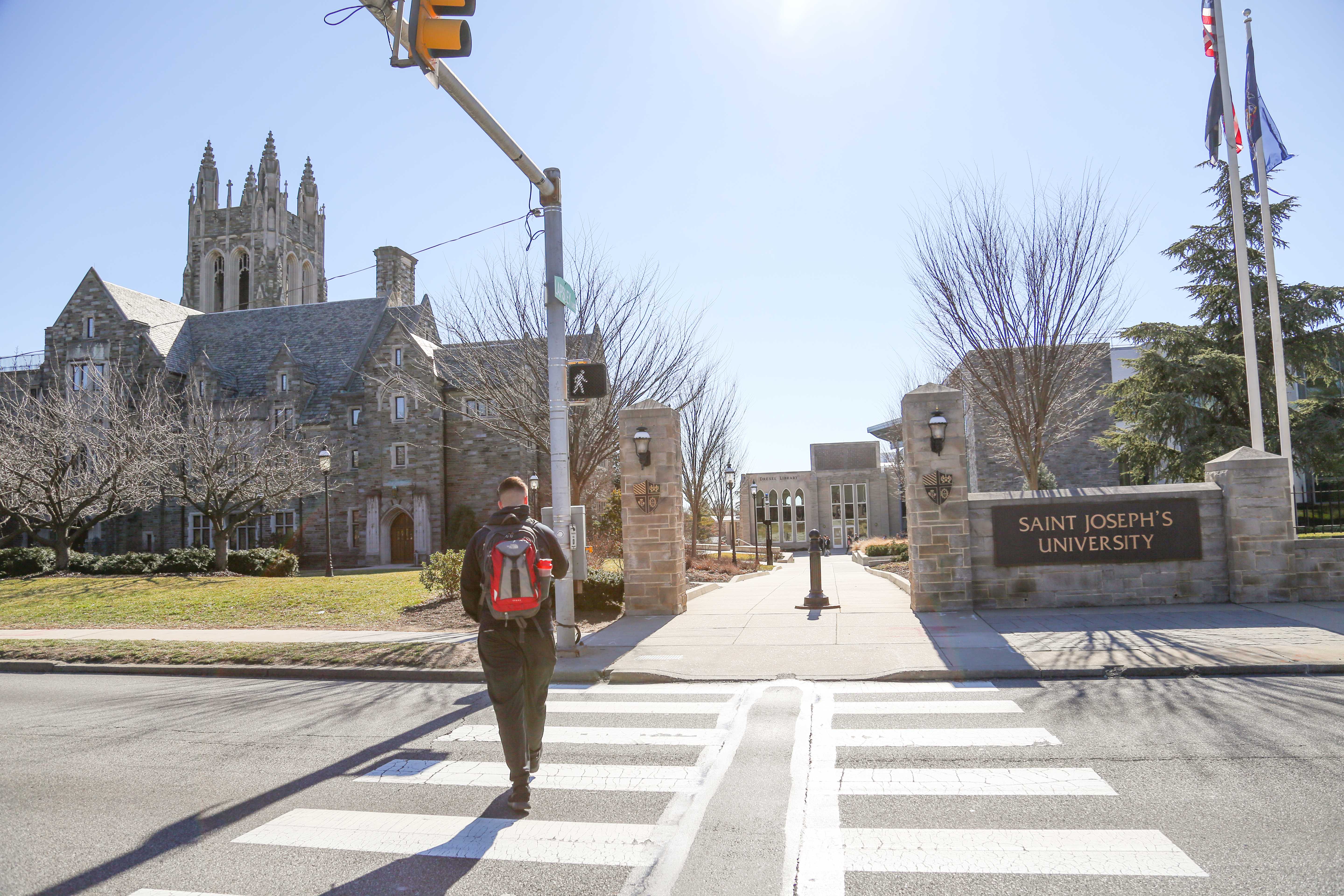Putting the responsibility on drivers
Seven reported accidents between pedestrians and moving vehicles have occurred at Saint Joseph’s University between January 2015 and February 2017. Six of those seven accidents involved St. Joe’s students.
The latest incident involved Rose Walton, ’19, on Feb. 14. Walton was crossing Cardinal Ave, leaving campus to go back to Pennbrook Apartments at 5:15 p.m. Seeing the walk sign, she crossed halfway into the intersection when a car turned left off of City Avenue and struck her.
“I honestly don’t remember what happened between walking and landing on the ground,” Walton said. “The car hit me pretty hard. If I didn’t land on my backpack, I probably would have landed on my back and broke it. My head shot back and I got pretty bad whiplash.”
Two female witnesses from Main campus and one male witness from the Merion side of campus came to Walton’s help. Thinking she was fine, Walton returned to Pennbrook and had a friend drive her to night cla

ss, despite concerns from her mother and friends.
“The second I sat down [in night class], it hit me,” Walton said. “I had a massive headache, my vision started blurring out and it was really hard to focus. During the class break, I stood up, and I could barely put any weight on my legs. It just hurt so bad.”
After night class, Walton was taken to the emergency room where she was told that she had a sprained knee, a concussion, and deep bruising on her legs from the impact.
In Philadelphia City Council District 4, where St. Joe’s is located, there have been four pedestrian deaths as a result of car crashes during 2016, including the death of 8-year-old Jayanna Powell on 63rd and Lansdowne in November 2016. As of February 2017, there has been one pedestrian death in District 4 and five citywide.
The 76 traffic fatalities in Philadelphia in 2016 is a historic low; 36 of the 76 are pedestrians, according to the Bicycle Coalition of Greater Philadelphia. Making up 47 percent of traffic fatalities is the highest that the percentage of pedestrian deaths has been since 1985.
In November 2016, Mayor Jim Kenney signed an executive order to create the Vision Zero Task Force. Vision Zero develops Philadelphia traffic safety efforts in the hopes to reduce all traffic-related fatalities and serious injuries by 2030. Kenney also hired Kelley Yemen as Philadelphia’s first director of Complete Streets.
“It’s a mind shift from how we have traditionally road safety programs,” Kelley Yemen said. “From putting the onus on the individual, the person walking, driving, or biking, to the system. That [involves] designing new roads, understanding how people are travelling, and figuring ways to accommodate that.”
After 120 days of consultation, the office of Complete Streets and the Vision Zero task force will present short and long-term plans in March that will utilize engineering, education, and enforcement.
The Office of Public Safety and Security at St. Joe’s is making efforts to keep pedestrians safe around campus. The university has lobbied to Philadelphia County as well as Montgomery County authorities for traffic calming measures near campus. Installations include crosswalks with speed bumps to slow traffic, warning signals for cars on Cardinal Ave., and signs that indicate state law requires drivers to allow pedestrians right of way in crossing areas.

“Despite that, we know that there are thousands of crossers in our community on a daily basis,” said Arthur Grover, director of the Office of Public Safety and Security. “One incident is too many. [City Ave.] is a very busy street with thousands of cars traversing every single day. Awareness is very important. Don’t take anything for granted. Be sure that the vehicles are stopped appropriately and the crosswalk is clear before crossing.”
Even though Public Safety has established traffic calming initiatives, that doesn’t always affect whether or not drivers adhere to them.
“I live in Rashford [Hall] and I constantly use that crosswalk [across 54th St.],” said Marygrace Hallinan, ’19. “Even the drivers are aggravated when you’re crossing because they want to zoom by. People just go way too fast around our campus. While we’re safe here, it is definitely a concern when you’re crossing because people aren’t cognizant of all the students.”
Speeding vehicles are a major concern for students because they are most likely to cause death and injuries.
“The key factor in crashes involving deaths and serious injuries is speed of the vehicle,” Yemen said “If somebody’s hit with a [vehicle] going 20 miles an hour, there’s a 10 percent chance they’ll die. That increases to 80-90 percent when that car is going 40 miles an hour. Getting speeds down where we know pedestrian and bike volumes are high is the surest way to reduce [these incidents].”
Walton believes, especially in Philadelphia, having to look and walk past parallel parked cars on the road adds another hindrance.
“You have to go even in front of those cars to make sure the road is clear and by then it could be too late because people always zoom by,” Walton said. “I mean in a perfect world, you can make the streets bigger, but I don’t know. I got dropped off by Bellarmine and I was so scared to cross that curve. [That] I’m going to get hit again with the crutches.”














































